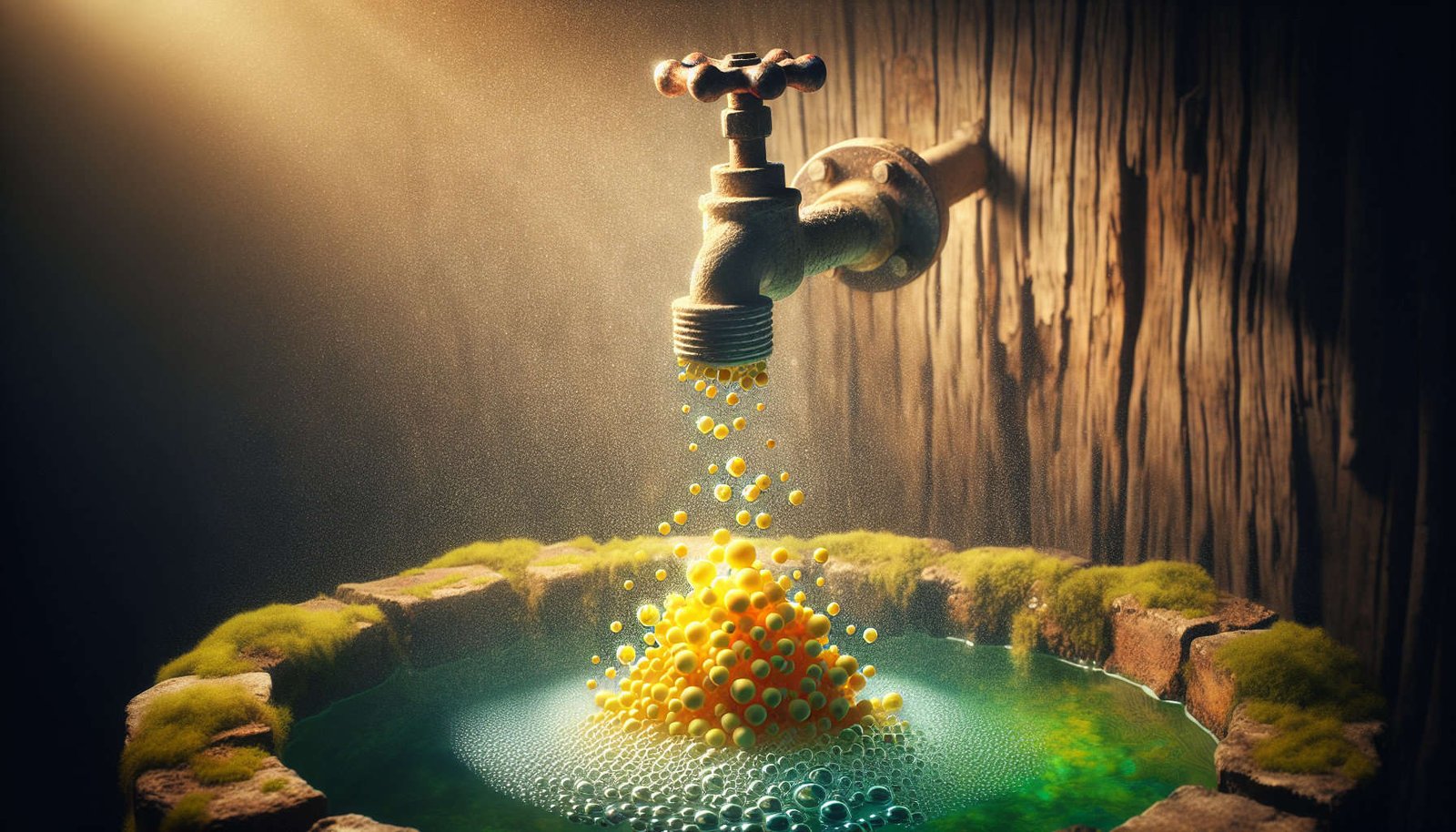Imagine waking up one morning, filled with excitement for a fresh start to the day. As you turn on the tap to fill your glass with some much-needed hydration, a wave of worry washes over you. What if the water you are about to drink is contaminated with 1,2-dibromo-3-chloropropane (DBCP)? In this article, we will explore effective methods to eliminate well water contamination caused by DBCP, providing you with peace of mind and ensuring the safety of your water supply. Together, we can navigate this challenge and take proactive steps towards a cleaner and healthier future.
Understanding 1,2-dibromo-3-chloropropane (DBCP)
Properties of DBCP
1,2-dibromo-3-chloropropane, commonly known as DBCP, is a chemical compound that has garnered attention due to its potential adverse effects on human health. It is a colorless liquid with a sweet odor and is primarily used as a pesticide and fumigant. DBCP was widely employed in the past for its ability to control nematodes in agriculture, particularly in the cultivation of crops such as bananas and pineapples. Despite its effectiveness as a pesticide, concerns arose regarding its high toxicity and persistence in the environment.
Sources of DBCP Contamination
DBCP contamination can occur through various sources, making it crucial to be aware of potential exposure pathways. One of the main ways DBCP enters the environment is through its application as a soil fumigant in agricultural practices. The compound can seep into groundwater and contaminate wells, leading to the presence of DBCP in drinking water. Additionally, improper storage and disposal of DBCP-containing products can contribute to soil and water contamination. It is important to understand these sources to effectively address and prevent DBCP contamination.

Assessing Well Water Contamination
Detecting DBCP in Well Water
Detecting DBCP in well water is essential to determining the level of contamination and taking appropriate measures to address the issue. Several methods can be employed to test for the presence of DBCP in water samples. These include laboratory-based techniques such as gas chromatography-mass spectrometry (GC-MS) and immunoassays. GC-MS analysis allows for precise identification and quantification of DBCP, while immunoassays provide a quicker and more cost-effective screening method. Regular testing should be conducted to ensure accurate monitoring of DBCP levels in well water.
Effects of DBCP on Human Health
Exposure to DBCP-contaminated well water can have detrimental effects on human health. Studies have linked DBCP to various health conditions, including gastrointestinal problems, reproductive and developmental issues, and potential carcinogenic effects. Prolonged exposure to DBCP has been associated with increased risks of cancer, particularly in the liver, kidneys, and reproductive organs. The toxic nature of DBCP underscores the importance of addressing contamination promptly and taking measures to prevent exposure.

Preventing DBCP Contamination
Regular Testing and Monitoring
One of the key strategies for preventing DBCP contamination is to implement regular testing and monitoring of well water. By conducting periodic water testing, individuals can stay informed about the quality of their drinking water and detect any potential contamination promptly. Testing should be carried out by certified laboratories using validated methods to ensure accurate results. Regular monitoring allows for early detection of DBCP contamination and enables timely intervention to mitigate risks to human health.
Avoiding DBCP Sources
Preventing DBCP contamination involves taking proactive measures to avoid exposure to potential sources of the compound. Limiting or discontinuing the use of DBCP-containing pesticides in agriculture is a crucial step toward reducing the presence of DBCP in groundwater. Implementing alternative pest control methods that are less harmful to the environment and human health can help prevent contamination. Proper storage and disposal practices should also be observed to prevent DBCP from entering water sources.

Eliminating DBCP from Well Water
1. Activated Carbon Filtration
Activated carbon filtration is a commonly used method to eliminate DBCP from well water. This technique involves passing the water through a filter bed containing activated carbon, which effectively adsorbs the DBCP molecules. Activated carbon has a high surface area and porous structure, allowing it to trap and remove contaminants. This filtration process can significantly reduce the concentration of DBCP in water, improving its quality and safety for consumption.
2. Reverse Osmosis
Reverse osmosis is another effective method for eliminating DBCP from well water. This process involves forcing water through a semipermeable membrane, which acts as a barrier to remove impurities such as DBCP. Reverse osmosis systems typically comprise multiple filtration stages, including pre-filters and a membrane, ensuring thorough removal of contaminants. This technology can efficiently eliminate DBCP from well water, providing a reliable solution for contamination issues.
3. Distillation
Distillation is a time-tested method that can be used to eliminate DBCP from well water. This process involves heating the water to produce steam, which is then condensed to obtain purified water. Distillation effectively separates DBCP and other contaminants from the water, as they do not vaporize at the same temperature as water. The purified water obtained through distillation is free from DBCP, ensuring safe consumption.
4. Aeration and Air Stripping
Aeration and air stripping are techniques that rely on the volatilization of DBCP to remove it from well water. Aeration involves exposing the water to air, allowing DBCP to evaporate. Air stripping, on the other hand, utilizes specially designed towers where air is forced through the water, facilitating the transfer of DBCP from the water to the air. These methods can be effective in reducing DBCP levels and improving the quality of well water.
5. Chemical Oxidation
Chemical oxidation is a method that utilizes chemical agents to break down DBCP molecules in well water. Oxidizing agents, such as chlorine or hydrogen peroxide, react with DBCP, transforming it into less harmful substances. This method can effectively reduce DBCP concentrations, but careful consideration should be given to the selection and dosage of oxidizing agents to prevent the formation of harmful byproducts. Chemical oxidation can be used as part of a comprehensive treatment approach to eliminate DBCP from well water.
6. Phytoremediation
Phytoremediation is a nature-based approach that utilizes plants to remove contaminants such as DBCP from water and soil. Certain plant species, known as hyperaccumulators, have the ability to absorb and accumulate toxic substances, including DBCP, from the environment. Implementing phytoremediation techniques involves selecting and cultivating suitable plant species in areas affected by DBCP contamination. The plants absorb DBCP through their roots, effectively reducing its concentration in the water. Phytoremediation offers an eco-friendly and sustainable method for eliminating DBCP from well water.

Maintaining Safe Drinking Water
Ensuring the ongoing safety of well water involves implementing various measures and practices.
7. Regular Maintenance and Upkeep
Regular maintenance and upkeep of wells are paramount to safeguarding the quality of well water. Well components should be inspected and maintained regularly to prevent any potential sources of contamination. This includes regular testing for leaks, addressing any issues promptly, and ensuring proper sealing and insulation. Regular maintenance helps to minimize the risk of contamination and ensures the continued provision of safe drinking water.
8. Educating Community Members
Education plays a vital role in promoting awareness about DBCP contamination and its potential health effects. Community members should be provided with information about the sources, risks, and prevention of DBCP contamination. Empowering individuals with knowledge enables them to take appropriate actions to protect themselves and their communities. Education programs, workshops, and informational materials can be valuable tools in disseminating crucial information about DBCP and its impact on well water.
9. Implementing Water Treatment Systems
Installing water treatment systems can be an effective approach to maintaining safe drinking water in areas impacted by DBCP contamination. Various treatment systems, such as activated carbon filters, reverse osmosis systems, or distillation units, can be tailored to suit specific needs and budgets. These systems provide an additional layer of protection by removing potential contaminants from well water, ensuring its safety for consumption.
10. Engaging Professional Assistance
In cases where DBCP contamination is severe or complex, seeking professional assistance is recommended. Environmental consultants and water treatment specialists possess the expertise and knowledge to assess the extent of contamination and devise appropriate remediation strategies. Their guidance can help individuals and communities effectively address DBCP contamination and prevent future occurrences.
By understanding the properties, sources, and effects of DBCP, implementing prevention measures, and employing various treatment methods, it is possible to eliminate DBCP from well water and maintain safe drinking water. Regular testing, community education, and professional assistance are key components in combating DBCP contamination and ensuring the well-being of individuals and communities. With a proactive approach and collaborative efforts, it is possible to eliminate DBCP from well water and preserve the health and safety of those reliant on this vital resource.


